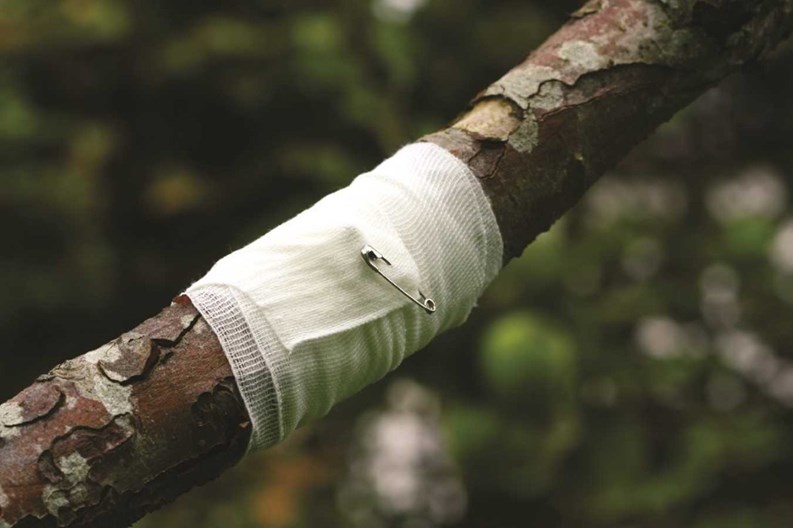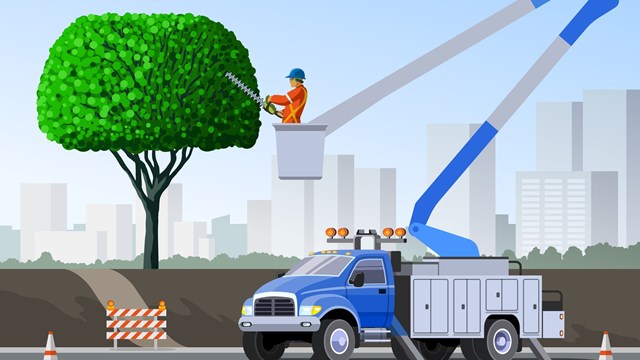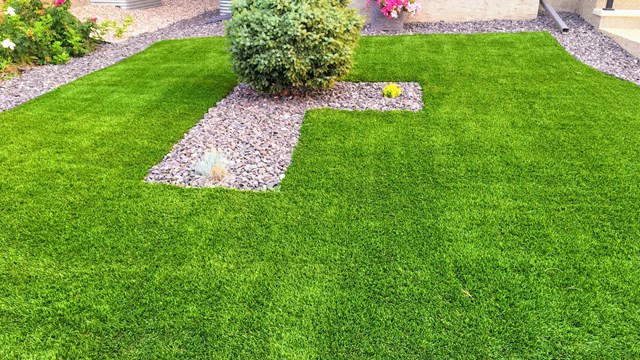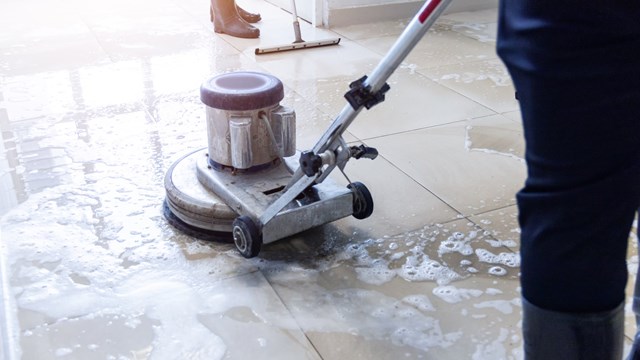Months have slipped by, but it’s not easy to forget the damage that last year’s brutal weather brought to the trees in the New England area. In June, severe tornadoes touched down in Massachusetts, leaving total devastation in their wake. Hurricane Irene swept through the area at the end of August with its 120-mph winds and flooding rains that caused heavy property damage. Then, in a nasty one-two punch, a historic October snow and ice storm weighed down both strong and already-weakened trees, snapping them in half and often pulling them right out of the ground.
Tree Trouble
“A lot of the damage from the October storm came because of routine neglect of trees on the property,” says Jason Yerke, a licensed arborist and owner of Distinctive Tree Care LLC in South Windsor, Connecticut. “In an ideal situation, you don’t have a tree over a target (like a condominium building), but they weren’t pruned back and the trees failed. Branches broke, trees got uprooted, and they broke at weak cavities. Some associations didn’t have money or the foresight to take care of the trees and ended up with thousands of dollars in removals and replacements. Last year it was the worst.”
Although trees stand proud and tall and almost seem to take care of themselves, they still need maintenance and upkeep to stay at their best because they are constantly subjected to damage not only caused by Mother Nature but also by our neglect.
“The number one problem humans cause for trees is foundation and parking lot expansion,” says arborist Richard Grant at Mayer Tree Service Inc., in Essex, Massachusetts. “The tree roots are covered with an impervious pavement and during construction process things are stockpiled which compact the root. When you compact the pores, you lock out where water can travel and they can’t get oxygen for the trees.”
Yerke agrees that construction is detrimental to a tree’s growth. “Take a tree that’s growing native to your area and put a building next to it,” says Yerke. “Cut its roots for utilities and you affect its root zone or height of where it’s growing. This is weakening the tree, but it probably would’ve been fine if we hadn’t touched it.”
Road Salt Harmful to Trees
Grant also explains how road salt is also one of a tree’s worst enemies. Road salt is used to reduce ice on the roads, but is kicked up from cars, hitting trees and grassy areas.
“It mostly affects the pine trees,” he says. “Road salt is calcium and calcium is taken in by the trees, but if they take in too much, it blocks the trees from taking in other phosphor and then the salt sits on the needles and kind on cooks it, interacting it with the sun.”
According to the University of Massachusetts Amherst Center for Agriculture, many trees and shrubs can be disfigured and killed by road salt (sodium chloride), significantly raising tree costs. The worst damage occurs to sensitive species planted near heavily-salted roads with high traffic, especially when they lie downhill, downwind, or have poor drainage. For deciduous trees, research suggests significant damage also comes from salt being taken up by the roots.
Larry Dvorsky, an arborist at The Care of Trees in Hamden, Connecticut, says that tree selection for a new property, or added to an existing property, should be based on what the site will allow and what the desired appearance is—but he typically sees a lot of Norway maple, flowering cherry and white pine on condo properties.
“The Norway Maple was the go-to shade tree for many years,” he says. “The cherry is a great flowering tree and white pine makes an effective screen. Indigenous trees, such as Red Maple or Horn Beam, that meet the requirements of the site work well, too.”
He says the highest-maintenance trees are those that require annual spraying of fungicides, such as American dogwood and most cultivars of flowering crab apple. “The lowest-maintenance trees seem to be the indigenous, such as oaks and maples,” says Dvorsky. “However, all trees in a landscape setting will require some maintenance over its life span.”
The maintenance needs will be dictated by the property’s conditions, but basic maintenance includes pruning or trimming the branches and mulching. Yerke says that most homeowners or managers mulch improperly. “They pile the mulch around the base of the trees whether it’s a young or old tree, but this mulching or volcano look actually really hurts them. It causes shallow rooting and that causes the tree to slowly die because its own roots choke it.”
And a tree that’s damaged and not repaired will often be further affected by disease or infection. “It’s the same thing as when we get a cut,” says Grant. “If a tree has a rip or wound, it invites insects and disease to harbor infections within the vascular system.”
Two insects that have seriously affected New England trees over the last few years have been the Asian Longhorned Beetle (ALB) and the Hemlock Woolly Adelgid. There has been an ongoing ALB infestation in Worcester, Massachusetts, that was originally detected in 2008. According to a release from David Orwig, a forest ecologist at the National Science Foundation's Harvard Forest Long-Term Ecological Research site, "the ALB apparently has been in the Worcester area for at least 10 years, and, undetected, could have easily spread to even larger tracts of continuous forest."
Native to parts of Asia, the beetle is believed to have arrived in North America in the wooden packing material used in cargo shipments from China.
Adelgids are tiny and get their name from their woolly white appearance. They host on the hemlock tree and produce 50-300 eggs. They suck sap from young twigs on hemlock trees and cause the hemlock needles to dry out and drop. Yerke says that the hemlock adelgid has probably killed 75% to 80% of native hemlocks from Maryland to Maine. “It’s a piercing and sucking insect that sucks the juices out of the trees and slowly kills them, “he says. “Fifteen percent are left because of man saving them through chemical applications or sheer luck.”
Use the Right Chemicals
Chemical controls can help but the best option for reducing HWA infestation is biological control through the introduction of natural predators and pathogens, according to a pest alert announcement from the U.S. Department of Agriculture (USDA) Forest Service.
Grant says that there is no natural predator for the Asian Longhorned Beetle, and if left untreated can wipe out all maple trees. “That’s a multi-million dollar industry for syrup and firewood,” says Grant. “Once they bore into the tree they make it weak because of the size of their galleries and tunnels. It’s a very destructive beetle.”
The best strategy for maintaining the health of all trees is to hire an arborist that can assess the site conditions and provide an expert opinion. Arborists are trained in the art and science of planting, caring for, and maintaining individual trees, and can be certified, depending on which state you live in. Certified Arborists are individuals who have achieved a level of knowledge in the art and science of tree care through experience and by passing a comprehensive examination. Certified Arborists must also continue their education to maintain their certification and adhere to a code of ethics.
“Develop a long-term relationship with a qualified arborist who can help to create a schedule of site assessments that determine the needs of the site, and develop a plan from there,” says Dvorsky. “The assessment should involve looking at hazardous trees for removal, deadwood pruning, developmental pruning on young trees, overall tree health as it relates to soil compaction, competition with turf, site disturbances, etc.”
Most experts agree that animals really don’t cause any damage to trees. However, squirrels or fox may occasionally damage trees by chewing bark from branches and trunks. “But,” Yerke cautions, “they use trees as vehicles to get into a building when they are allowed to grow too close to the building.”
Trees that managed to withstand last year’s wild weather in New England deserve a little TLC—and associations that appreciate the beauty those trees contribute to the community would do well to take steps to prepare them for the next stormy onslaught.
Lisa Iannucci is a freelance writer and a frequent contributor to New England Condominium.







Leave a Comment